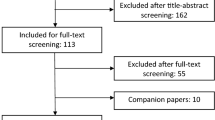Abstract
Introduction
Thoracoscopic Repair of Esophageal Atresia with Tracheoesophageal Fistula (TREAT) is now an established procedure. The anastomosis performed thoracoscopically is always compared to the hand sewn anastomosis in open surgery. The present study analyses the outcome of TREAT versus open repair in terms of radiological index representing the esophageal calibre.
Patients and methods
Patients with esophageal atresia-tracheoesophageal fistula (EA-TEF) operated by open repair and TREAT were evaluated. An esophageal calibre anastomotic index (EACI) was formulated based on measurements performed on contrast esophagogram at 3 months or later. The diameter of the esophagus at the level of anastomosis was measured, along with ratios of radiologically measured values both above and below the anastomosis; based on which an index was calculated. A value closer to 1 was considered normal, whereas a ratio < 0.65 was taken as cut off for stricture. This index calculated from the open and TREAT groups were compared.
Results
Total of 15 patients were enrolled in each group. The mean diameter ratio was calculated by measuring the breadth of contrast enhanced esophagus at three levels as described. The net EACI in the open and TREAT group was 0.779 ± 0.141 and 0.788 ± 0.217, respectively. The mean follow-up duration of these patients was 1.75 years ± 0.4 years. Clinical correlation was also done across the two groups and related well to the corresponding index.
Conclusion
EACI is a numerical way to assess the calibre of esophageal anastomosis and has been found to correlate clinically. In the present study, there was no significant difference between the EACI of the two groups, demonstrating that thoracoscopic anastomosis are comparable to those performed open.



Similar content being viewed by others
References
Torfs CP, Curry CJ, Bateson TF (1995) Population-based study of tracheoesophageal fistula and esophageal atresia. Teratology 52:220–232
Konkin DE, O’Hali WA, Webber EM, Blair GK (2003) Outcomes in esophageal atresia and tracheoesophageal fistula. J Pediatr Surg 38:1726–1729
Friedmacher F, Kroneis B, Huber-Zeyringer A, Schober P, Till H, Sauer H et al (2017) Postoperative complications and functional outcome after esophageal atresia repair: results from longitudinal single-center follow-up. J Gastrointest Surg 21:927–935
Michaud L, Guimber D, Sfeir R et al (2001) Anastomotic stenosis after surgical treatment of esophageal atresia: frequency, risk factors and effectiveness of esophageal dilatations. Arch Pediatr 8:268–274
Sun LY, Laberge JM, Yousef Y, Baird R (2015) The Esophageal Anastomotic Stricture Index (EASI) for the management of esophageal atresia. J Pediatr Surg 50:107–110
Kanojia RP, Bhardwaj N, Dwivedi D, Kumar R, Joshi S, Samujh R et al (2016) Thoracoscopic repair of esophageal atresia with tracheoesophageal fistula: basics of technique and its nuances. J Indian Assoc Pediatr Surg 21:120–124
Okuyama H, Saka R, Takama Y, Nomura M, Ueno T, Tazuke Y (2020) Thoracoscopic repair of esophageal atresia. Surg Today 50:966–973
Serhal L, Gottrand F, Sfeir R, Guimber D, Devos P, Bonnevalle M et al (2010) Anastomotic stricture after surgical repair of esophageal atresia: frequency, risk factors, and efficacy of esophageal bougie dilatations. J Pediatr Surg 45:1459–1462
Landisch RM, Foster S, Gregg D, Chelius T, Cassidy LD, Lerner D et al (2017) Utilizing stricture indices to predict dilation of strictures after esophageal atresia repair. J Surg Res 216:172–178
Nambirajan L, Rintala RJ, Losty PD, Carty H, Lloyd DA (1998) The value of early postoperative oesophagography following repair of oesophageal atresia. Pediatr Surg Int 13:76–78
Tandon RK, Sharma S, Sinha SK et al (2008) Esophageal atresia: factors influencing survival—experience at an Indian tertiary centre. J Indian Assoc Pediatr Surg 13:2–6
Wu Y, Kuang H, Lv T, Wu C (2017) Comparison of clinical outcomes between open and thoracoscopic repair for esophageal atresia with tracheoesophageal fistula: a systematic review and meta-analysis. Pediatr Surg Int 33:1147–1157
Rozeik AE, Elbarbary MM, Saleh AM, Khodary AR, Al-Ekrashy MA (2020) Thoracoscopic versus conventional open repair of tracheoesophageal fistula in neonates: a short-term comparative study. J Pediatr Surg 55:1854–1859
Funding
None.
Author information
Authors and Affiliations
Corresponding author
Ethics declarations
Conflict of interest
The authors declare that they have no conflict of interest.
Rights and permissions
About this article
Cite this article
Kumar, R., Kanojia, R.P., Gupta, P.K. et al. Esophageal anastomotic caliber index: assessment tool for measuring outcome after thoracoscopic and open repair of esophageal atresia with trachea-esophageal fistula. J Ped Endosc Surg 3, 123–127 (2021). https://doi.org/10.1007/s42804-021-00098-6
Received:
Revised:
Accepted:
Published:
Issue Date:
DOI: https://doi.org/10.1007/s42804-021-00098-6




